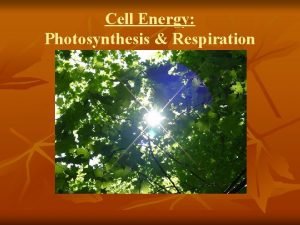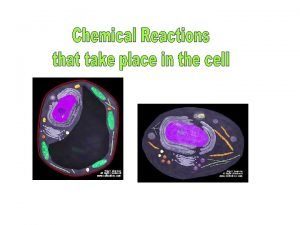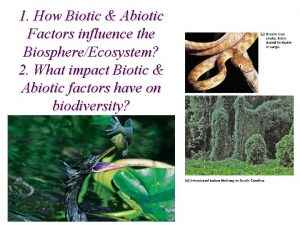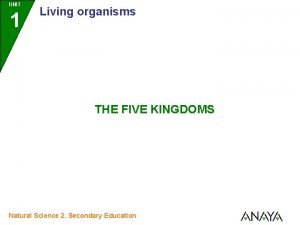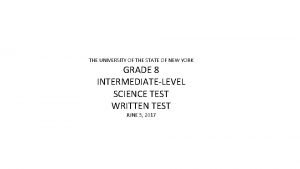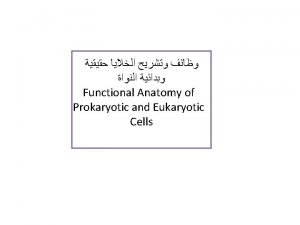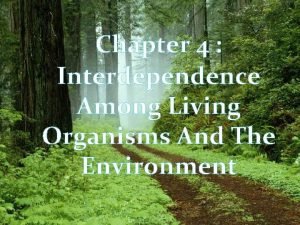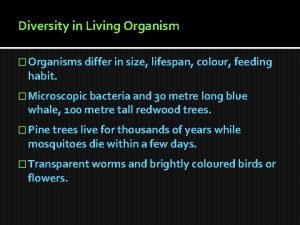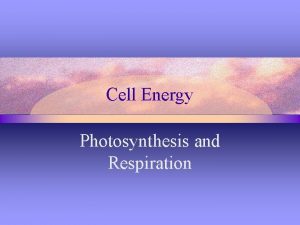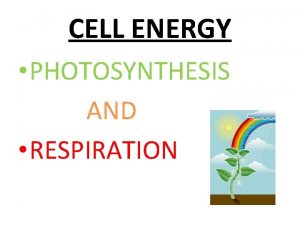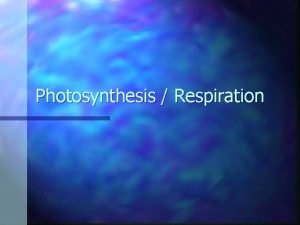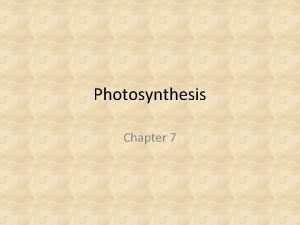Energy and Photosynthesis Cell Energy All living organisms













- Slides: 13

Energy and Photosynthesis

Cell Energy • All living organisms must be able to obtain energy from the environment in which they live. • Plants and other green organisms are able to trap the light energy in sunlight and store it in the bonds of certain molecules for later use.

Obtaining energy • All organisms must have a way to obtain energy. They are classified in 2 ways: – Autotrophs – organisms that can make their own food – Heterotrophs – organisms that must obtain energy by consuming other organisms

Work and the need for energy • Active transport, cell division, movement of flagella or cilia, and the production, transport, and storage of proteins are some examples of cell processes that require energy. • There is a molecule in your cells that is a quick source of energy for any organelle in the cell that needs it.

Work and the need for energy • The name of this energy molecule is adenosine triphosphate or ATP for short. • ATP is composed of an adenosine molecule with three phosphate groups attached.

Comparing ATP & ADP = ½ charged battery ATP = fully charged battery 2 phosphate groups 3 phosphate groups

How cells tap into the energy stored in ATP • When ATP is broken down and the energy is released, the energy must be captured and used efficiently by cells. • Many proteins have a specific site where ATP can bind.

How does energy get to Earth? • • Energy from sun goes into plants Plants make sugars Animals eat the plants Other animals eat the first animals.

Trapping Energy from Sunlight • The process that uses the sun’s energy to make simple sugars is called photosynthesis.

The chloroplast and pigments • To trap the energy in the sun’s light, the chloroplasts contain pigments, molecules that absorb specific wavelengths of sunlight. • The most common pigment is chlorophyll. • Chlorophyll absorbs most wavelengths of light except green. Since green light is reflected, we see plants as green.

Photosynthesis Reactions • Uses energy storing compounds (ATP and NADPH) to produce high energy sugars • Provides the raw materials to produce everything the cells needs.

• The general equation for photosynthesis is written as 6 CO 2 + 6 H 2 O→C 6 H 12 O 6 + 6 O 2 Carbon Dioxide + Water → Sugar + Oxygen

What affects the rate of photosynthesis? • Temperature – most efficient between 0 – 35 o C • Water – insufficient water may slow or stop photosynthesis • Light intensity – ↑ light = ↑ photosynthesis – ↓light = ↓ photosynthesis – There is a maximum rate!
 Venn diagram of living things and nonliving things
Venn diagram of living things and nonliving things Smallest living unit of life
Smallest living unit of life How do plants get glucose
How do plants get glucose Single celled and multi celled organisms
Single celled and multi celled organisms Member of the same species
Member of the same species Where do all organisms get their energy
Where do all organisms get their energy Living organisms and their surroundings
Living organisms and their surroundings Photosynthesis transforms light energy into chemical energy
Photosynthesis transforms light energy into chemical energy Examples of animal organs
Examples of animal organs What do the rabbit, fungus, and tree have in common? *
What do the rabbit, fungus, and tree have in common? * Are all living things based on the metric system
Are all living things based on the metric system Is protozoa prokaryotic or eukaryotic
Is protozoa prokaryotic or eukaryotic Living organisms in an ecosystem
Living organisms in an ecosystem Living organisms differ in
Living organisms differ in


